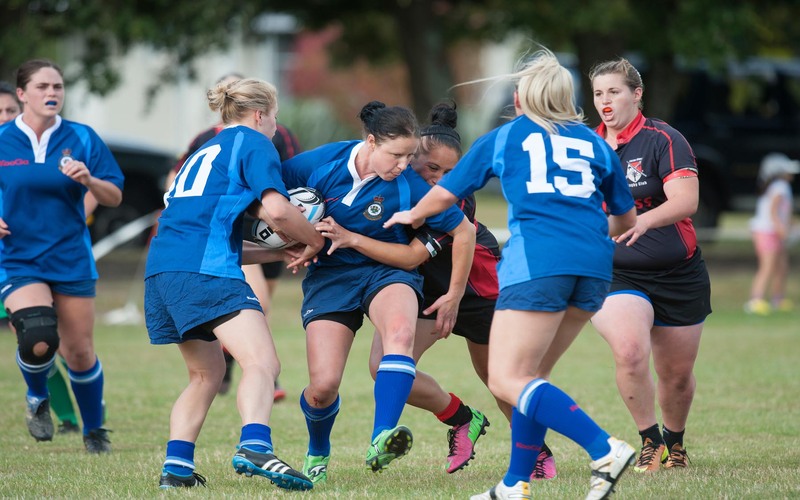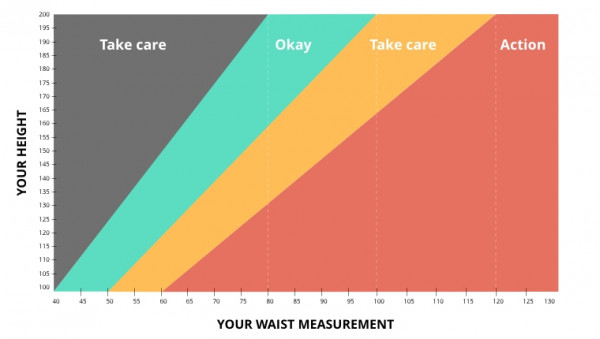Health-related fitness monitoring
Fitness is a reliable indicator of a person’s health status. Health-related fitness monitoring is a useful way of bench-marking where you are now, motivating you to improve, and guiding how that improvement can be achieved.
Aerobic fitness testing
Aerobic fitness is one of (if not) the most important risk factors for cardiovascular disease. The higher your aerobic fitness, the lower your risk of heart attack, stroke and various other conditions. The measure of aerobic fitness is VO2max, the volume of oxygen that your body can take in and utilise in one minute.
The best way to measure this is in the laboratory but you can get a very good indication of your VO2max with a simple field test. Try these and then compare your score to the tables below to see how your fare.

Body composition assessment
The other measure that is extremely useful when considering your health-related fitness is your body composition (the proportion of fat, muscle, bone, etc.)
The most common methods for estimating body composition include:
- Bioelectrical Impedance Analysis (BIA): Electrical signals are sent from electrodes through the soles of your feet to your abdomen to estimate your body composition.
- Bioelectrical Impedance Spectroscopy (BIS): A bit like BIA but assesses impedance over a range of frequencies, rather than just one, so is more accurate. BIS devices are available at Devonport and Trentham and measure the amount of body fat and lean muscle mass, both of which are important for health. Your result can then be compared to the table below.
- Body Mass Index (BMI): A generalized calculation of body fat based on your height and weight. BMI is a cheap and simple tool, but it is inaccurate as it doesn’t take into account whether mass is muscle or fat.
- Waist to Height ratio (WHtR): The ratio of your waist to your height takes into account the distribution of body fat in the abdominal region, which has been shown to be more associated with cardiovascular risk and insulin resistance than body weight. Plot your height and waist on the chart below, or divide your height in cm by your waist in cm - ideally this would be less than 0.5.

- Skinfold thickness. Calipers are used to measure skinfold thickness at various sites of the body which can then be used to estimate total body fat. Again, your result can then be compared to the table below. PTI’s at some gymnasiums may be able to offer this.
Taking measurements every few months are a useful way to track changes.
Percentage body fat classifications
| Males | Females | |
| Essential fat | 2-5% | 10-13% |
| Athletes | 6-13% | 14-20% |
| Average | 14-25% | 21-32% |
| Excessive fat | 25-40% | 33-40% |
| Risky (high body fat) | >40% | >40% |
Source. The American Physiotherapy Association
Muscular strength and endurance testing
Strength testing measures the maximal amount of force that a muscle or muscle group can exert at one time. Muscular endurance testing, by comparison, measures the length of time a muscle group can contract and release before it fatigues. Both are important for health.
You can test your muscular strength and endurance in the gym, or for a quick assessment at home, a simple push up test will provide a reasonable indication of your whole-body muscular strength and endurance. You can then compare your score to people of the same age and sex and set yourself a target for improvement.
Standard press up cut-offs for males
| Poor | Fair | Good | Very good | Excellent | |
| 20-29 | ≤16 | 17-21 | 22-28 | 29-35 | ≥36 |
| 30-39 | ≤11 | 12-16 | 17-21 | 22-29 | ≥30 |
| 40-49 | ≤9 | 10-12 | 13-16 | 17-24 | ≥25 |
| 50-59 | ≤6 | 7-9 | 10-12 | 13-20 | ≥21 |
| 60+ years | ≤4 | 5-7 | 8-10 | 11-17 | ≥18 |
Source. Canadian Society for Exercise Physiology
Standard press up cut-offs for females
| Poor | Fair | Good | <Very good | Excellent | |
| 20-29 | ≤9 | 10-14 | 15-20 | 21-29 | ≥30 |
| 30-39 | ≤7 | 8-12 | 13-19 | 20-26 | ≥27 |
| 40-49 | ≤4 | 5-10 | 11-14 | 15-23 | ≥24 |
| 50-59 | ≤1 | 2-6 | 7-10 | 11-20 | ≥21 |
|
60+ years |
≤1 | 2-4 | 5-11 | 12-16 | ≥17 |
Source. Canadian Society for Exercise Physiology
Modified press up cut-offs for females
| Poor | Fair | Good | Very good | Excellent | |
| 20-29 | <23 | 23-29 | 30-35 | 36-44 | >44 |
| 30-39 | <19 | 19-23 | 24-30 | 31-38 | >38 |
| 40-49 | <12 | 13-17 | 18-23 | 24-32 | >32 |
| 50-59 | <10 | 12-16 | 17-20 | 21-27 | >27 |
| 60+ years | <5 | 5-11 | 12-14 | 15-19 | >19 |
Source. Cooper Institute for Aerobics Research
To test your core strength, you could see how long you can hold a prone hold (plank exercise) for. Normative data for different populations is lacking but an average score for is thought to be around 110 seconds for males, and 72 seconds for females. Compare yourself to these times and then set yourself a target for improvement.
Finally, tests that compare the left and right sides of your body are good for identifying injury risk and performance limitations. Be aware of how your performance on exercises on one side of your body compares to the other and if there is a difference, give the weaker side a bit more attention in training. For example, if you can side plank for 45 seconds on your right side but only 30 secs on your left, do an extra rep on your left side each session to try and redress the imbalance.
Mobility assessment
Measuring the flexibility/mobility of your joints is vital in determining whether you have postural imbalances, foot instability, or limitations in your range of motion. This may increase your susceptibility to injury. Read further in Mobility and stability.
There are a variety of tests used to measure range of movement including:
- Ankle Mobility
- Hip Mobility
- Core Stability
- Shoulder Range of Movement
- Upper and Lower Limb Stability - Y-Balance Test
Find some helpful videos on how to test and increase your mobility here